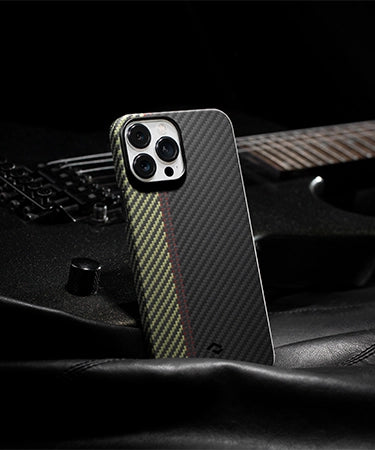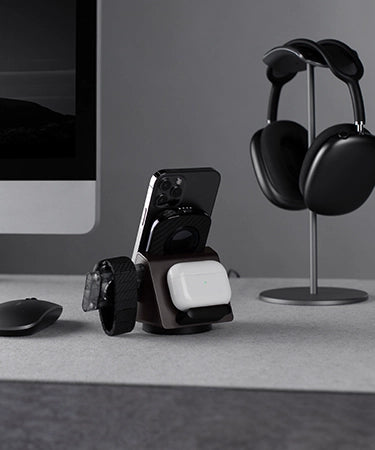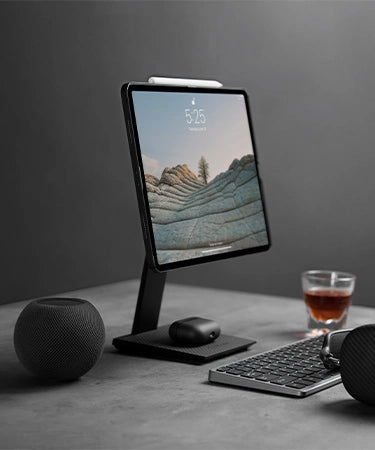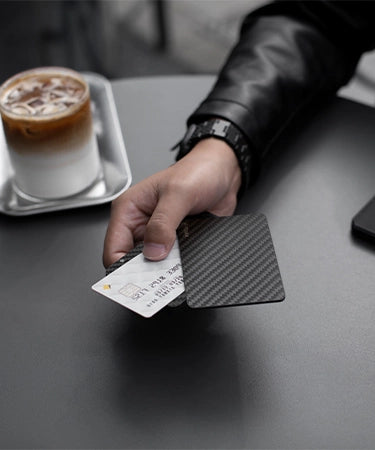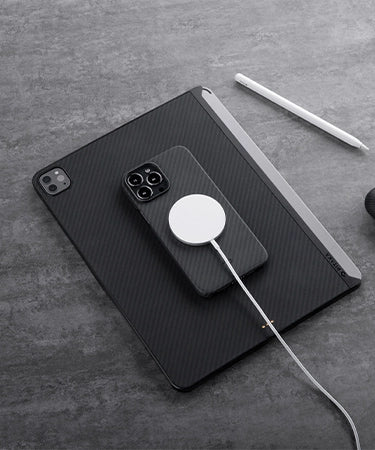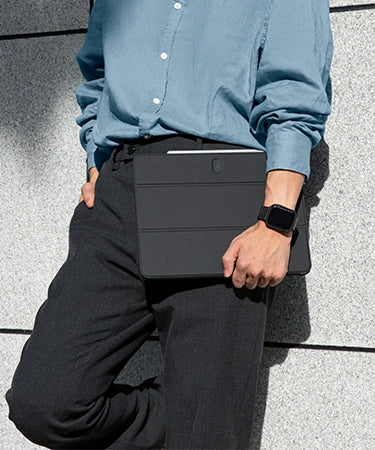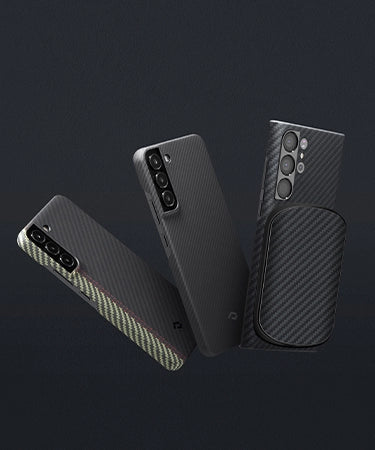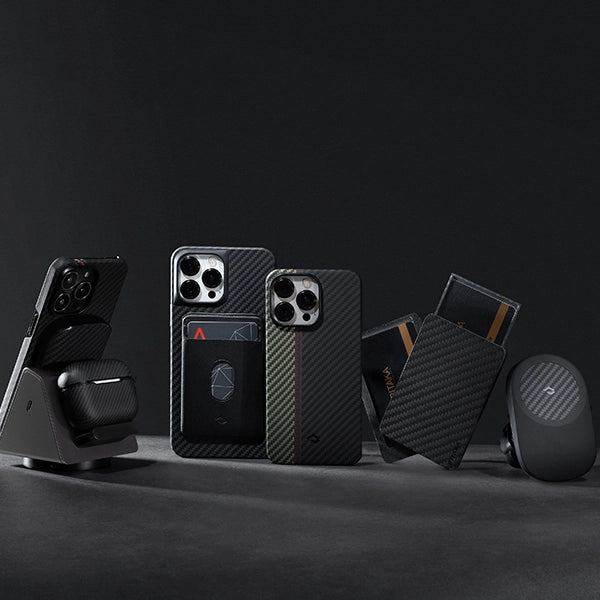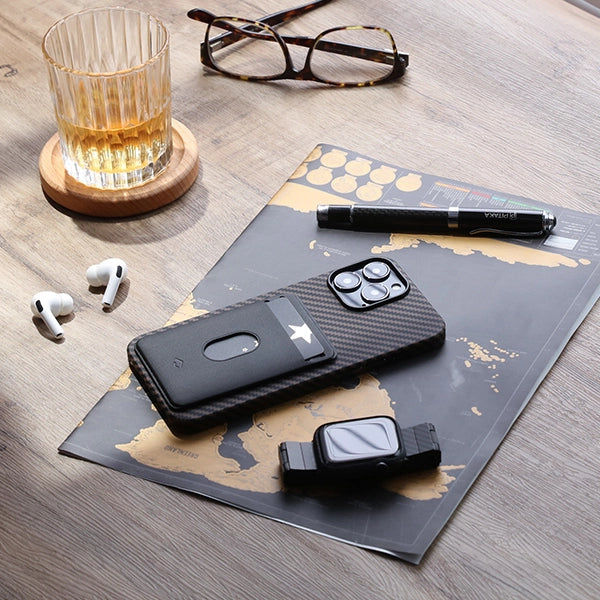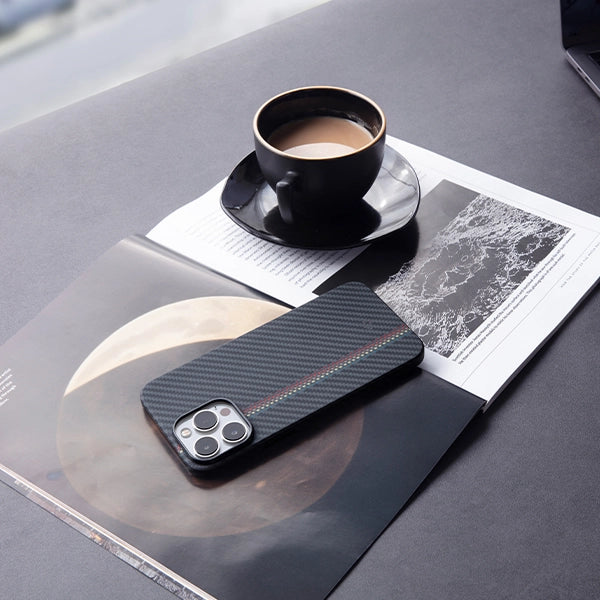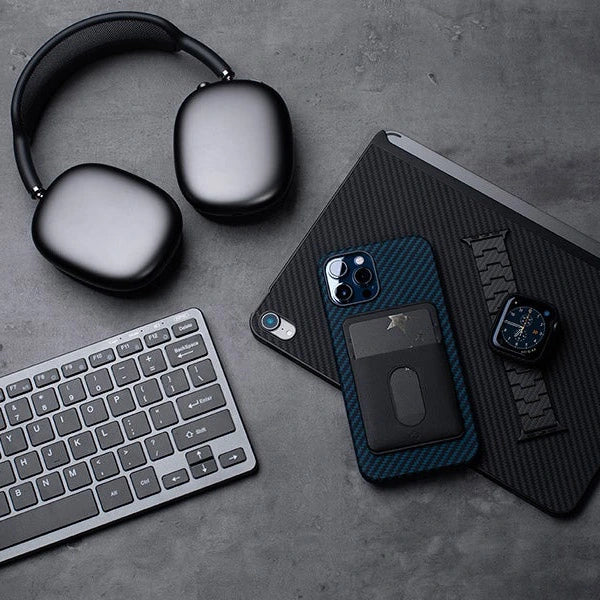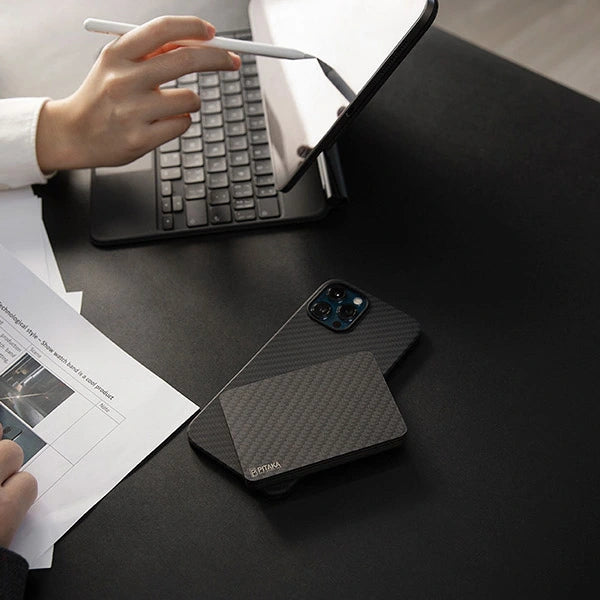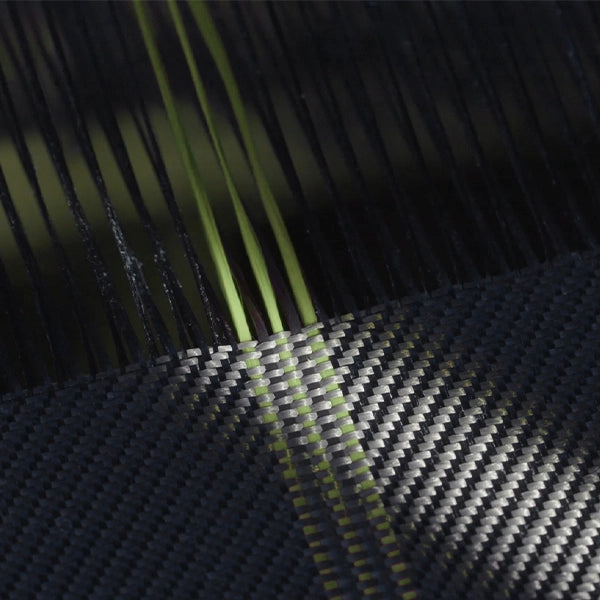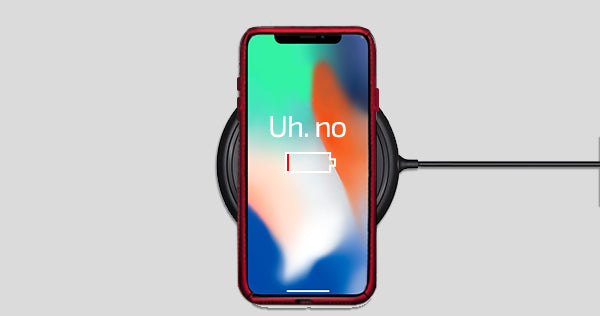
One of the biggest changes in Apple’s latest iPhones is the long-awaited addition of wireless charging. And if you now consider how strong Apple’s influence is on the technology around us, it’s not hard to see that most if not all other brands will adopt wireless charging sooner or later, just as Apple has done.
The impact of this for the user is that you then start to build up a range of wireless charging pads to use wherever you need it.
However, one big question that is often not considered until too late is this, will your phone case affect your phone’s wireless charging?
Read on......
Is your phone case affecting your wireless charging?
You might not be aware of this, but your phone case can have a detrimental effect on your phone when it comes to wireless charging, so how can this be?
Well, first we need to understand a bit more about wireless charging and then understand how it actually works.
(A)The Market outlook for Qi-enabled phones
Unfortunately, there are several different types of wireless charging available in the market, and the three most common ones are: Qi (from the Wireless Power Consortium), PMA (from the Power Matters Alliance) and A4WP (from the Alliance for Wireless Power).
Since Apple has announced that the iPhone uses the Qi wireless charging technology, it’s highly likely that it will become the market leader compared to the other two and that is why we will be focusing on the Qi technology today.
OK, back to the subject: Wireless charging has been around for several years now, but have you ever wondered what has been going on?
A quick check on Wikipedia shows us this:
| Mobile Phone Brands | Phone models | Time |
|---|---|---|
| Nokia | Lumia 820 and Lumia 920 | September 5, 2012 |
| Google and LG | Nexus 4 | October 2012 |
| Motorola Mobility | Droid 3 and Droid 4 | |
| HTC | Droid DNA | November 21, 2012 |
| Google and LG | Nexus 5 | October 31, 2013 |
| Samsung | Galaxy S5 | April 14, 2014 |
| Microsoft | Lumia 950 XL, Lumia 950 | November 20, 2015 |
| Samsung | Galaxy S7 and S7 Edge | February 22, 2016 |
| Apple | iPhone 8 and iPhone X | September 12, 2017 |
You can see from the chart, over the past six years, more and more phone brands have adopted wireless charging. Google, LG, and Samsung have all launched smartphones with wireless charging over the years, and now, of course, Apple has joined them with its newly released iPhone 8 and iPhone X both featuring the Qi wireless charging standard. It’s fair to say that wireless charging has definitely entered the mainstream.
How does wireless charging work?
Wireless charging (or inductive charging) uses an electromagnetic field to transfer energy between two objects through electromagnetic induction. Put simply, this enables you to charge your phone or device without actually plugging it in, you simply place your phone on a charging pad, and the phone is charged without any wired connection.
Let’s look at the science of wireless charging.
Fundamentally, wireless charging uses two resonant inductive couplings to transmit low-power signals between two devices. The base station has a transmitter coil, and your phone has a receiver coil. The base station regularly sends a signal out, and when a receiver coil gets close enough, then the resonance or capacity change happens in the signal. The waveform of the signal is then modulated and inductive charging begins.
But that’s not all there is to it.
Here’s a really good diagram that explains it even better:
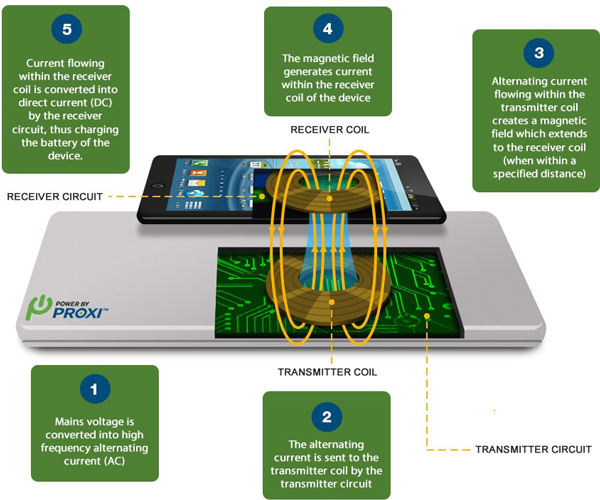
As you can see, inductive charging uses the two electromagnetic coils to create a magnetic field between two devices. This electromagnetic field is composed of an electric field (produced by stationary charges) and a magnetic field (produced by moving currents), these two fields work simultaneously to enable the wireless charging process.
However, what you might not realize is that some materials can reduce the electromagnetic field. Materials, which are conductive or magnetic including sheet metal, metal screen, and metal foam, etc., can all reduce the impact of these charging fields.
This will also explain why companies like Samsung and now Apple use plastic or glass for the back of their phones rather than any form of metal, which would affect the wireless charging capabilities.
(C)So, how does the phone case effect your wireless charging?
If you are one of those who want to use a magnetic phone mount/holder, it’s necessary for you to stick a metal plate on the back of your phone or phone case, check my previous article of magnetic phone mount if you are not too sure about this.
Have a look at the position of the metal plate on the Samsung S8 below:

Now have a look at what’s inside the Samsung S8 below:
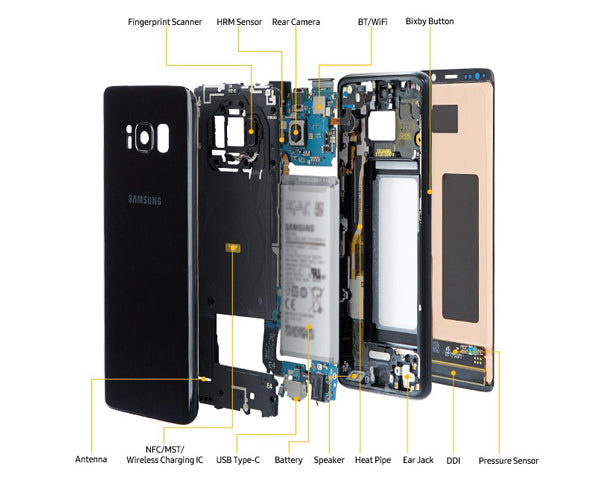
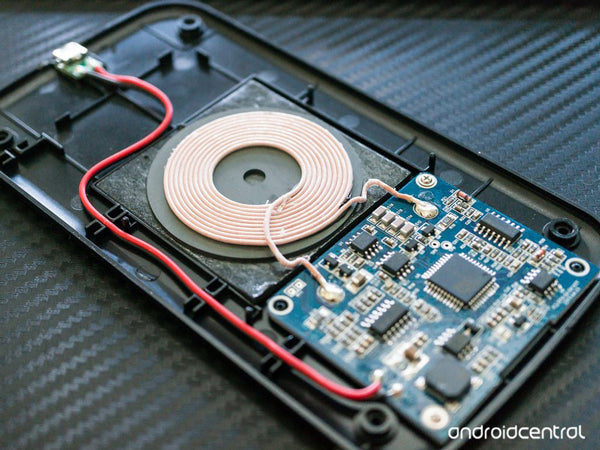
These pictures show us some interesting details about the way that the charging is implemented in the Samsung S8.
First, the wireless charging coil in the Samsung S8 (wireless charging IC is shown in the picture) is located close to the middle of the back panel. Second, the metal plate on the back of S8, used for the magnetic phone mount, is also placed in the middle, which unfortunately just happens to be where the receiver coil for wireless charging is.
What this means is that whenever you want to charge your phone wirelessly, the metal plate on the back is affecting the magnetic field of the charger.
Are there any ways to avoid this?
Well, one of the easiest ways to avoid this is to use a PITAKA MagEZ Case (or MagEZ Case Pro), expressly designed so that you can mount your phone to a magnetic base but not affect the wireless charging capabilities of your phone.
How does it solve the problem?
(A)The position of the metal plate.
To differentiate the PITAKA magnetic phone cases from other common cases that have a metal plate inside them, the internal structure of the MagEZ Case has some very smart adjustments made to it.
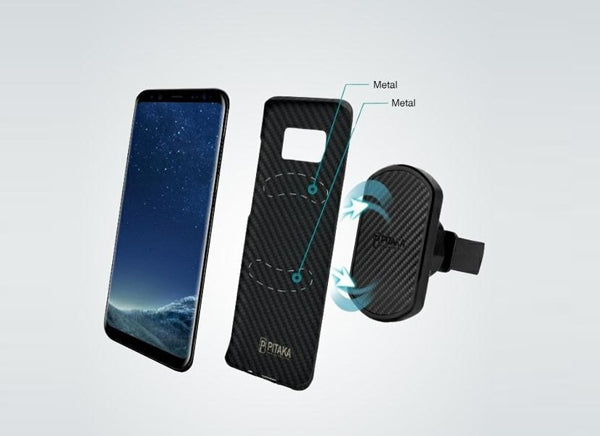
Can you see any metal plates in the picture? Of course, you can’t, because the metal plates are cleverly embedded within the case. You would be hard pushed to feel them unless they were clearly marked on the case.
The metal plates are placed in a specific curved design around the center of the case, one at the top and one at the bottom. This means that the case can work both with the magnetic car dock and with a wireless charging pad without affecting the ability to charge.
(B)So, does it really work?
Check out the video below:
From the video, you can see that the phone, fitted with a MagEZ Case, works perfectly well with the wireless charging pad.
What are the advantages compared to other phone cases?
(A)MagEZ Case VS a case with a metal plate stuck on the back
Firstly, with MagEZ Case, the aesthetics of your phone will not be affected.
As I mentioned earlier, the MagEZ Case has special metal plates embedded within which means that it is very slim, it’s designed to complement your phone’s design and not ruin it.
Secondly, the MagEZ Case does not affect your phone’s wireless charging.
This has been proved in the video, by comparing the 2 different cases. The MagEZ Case is simply better made, better design and does not impact your phone’s wireless charging capabilities.
(B)MagEZ Case VS a case without the metal plate
I know, some of you might be thinking, ‘I can just stop using the annoying metal plate or the magnetic phone case’, that will solve the problem. Yes, of course you can do this, but there are more advantages to using a MagEZ Case when compared with a case without the metal plate.
Firstly, the embedded metal plates enable you to attach your phone to your magnetic phone mount in seconds whenever you need to, whilst the other cases don’t have that capability.
Secondly, even with the metal plate embedded, the thickness and weight of the MagEZ Case are barely affected, just 0.85mm thick and 14g weight, it’s hard to appreciate how thin it actually without feeling it for yourself? If you were to measure a simple case in comparison to the MagEZ Case I’m sure you would be surprised.

In Conclusion
It is pretty conclusive that wireless charging is now firmly in the mainstream and more and more phone brands are embracing this very convenient technology within their designs.
However, what is less clear to many is that using a simple, stick on metal plate to hold your phone magnetically can have a very adverse effect on your phones wireless charging capabilities.
To solve the problem, we specifically designed and embedded our metal plates in the MagEZ Case (and MagEZ Case Pro that provides maximum protection) to make sure that it works correctly with our magnetic phone mount and never affects the wireless charging of your phone.
As we have discussed before, a high quality case for your phone is essential to make sure that it is protected.
And now, you will see that the PITAKA MagEZ Case is the perfect answer to providing protection for your phone as well as providing a super fast magnetic solution to hold your phone in the car and all without affecting the wireless charging functionality.
So, do the right thing and get your phone protected by the PITAKA MagEZ Case, you won’t regret it.
